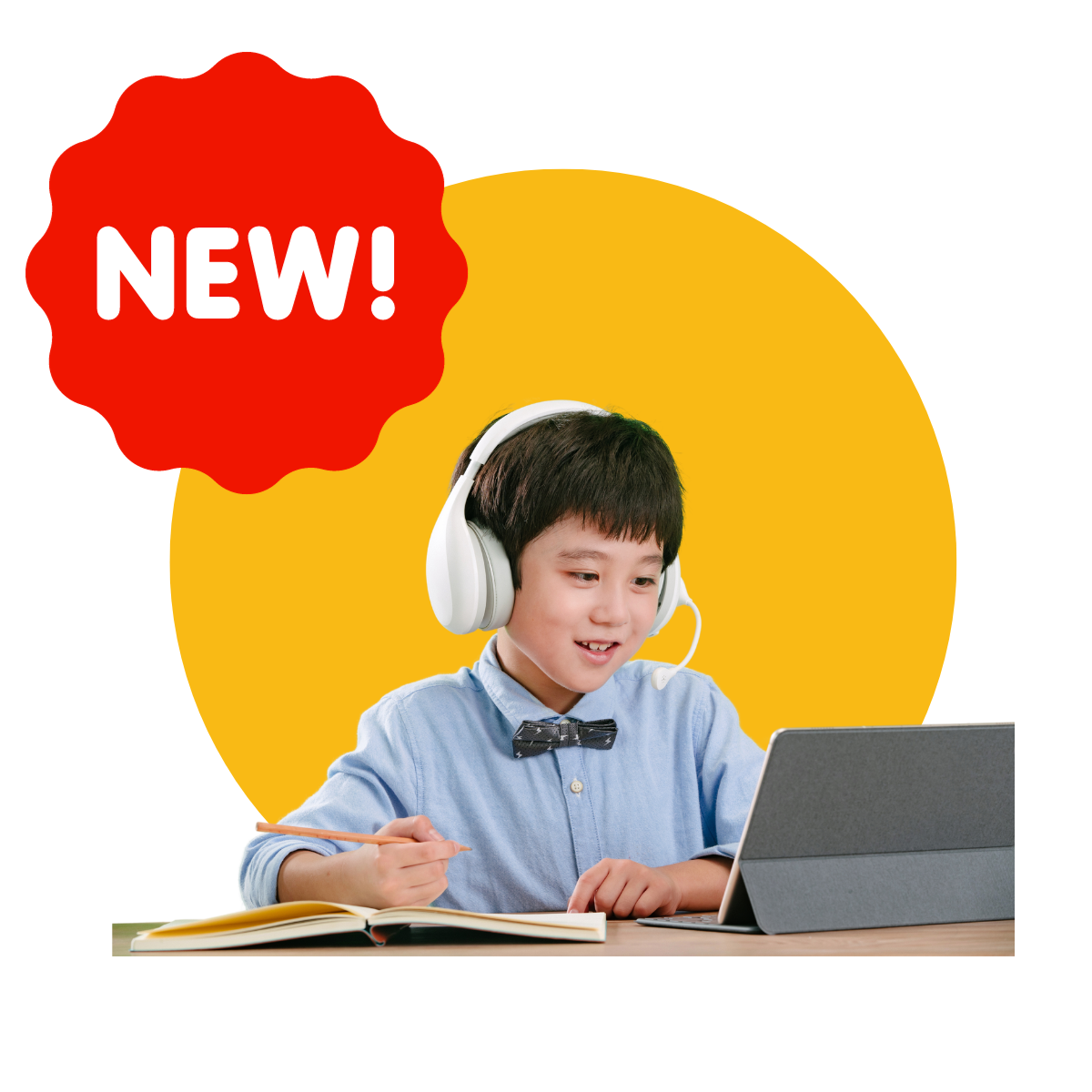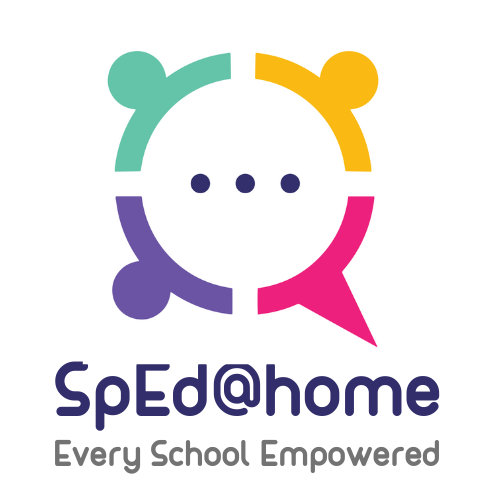Dyslexia is a learning difference that affects the way people process language and results in difficulties with reading, writing, and spelling. While dyslexia cannot be “cured,” early identification and appropriate interventions can significantly improve reading and language skills. In addition to professional help, engaging in dyslexia exercises at home can further enhance a dyslexic individual’s learning journey. In this article, we will explore various effective exercises that can be easily incorporated into daily routines to empower dyslexic learners and foster their self-confidence.
Multi-Sensory Activities
One of the most beneficial approaches for dyslexic individuals is multi-sensory learning. This technique engages multiple senses simultaneously, promoting stronger connections in the brain for better retention and comprehension. Activities such as finger painting, sand writing, and tracing letters in the air combine sight, touch, and kinesthetic experiences. These multi-sensory exercises can reinforce letter recognition and phonetic associations, aiding dyslexic learners in grasping the complexities of language.
Audiobooks and Read-Alongs
Listening to audiobooks or participating in read-along sessions with printed texts can be highly advantageous for dyslexic individuals. Audiobooks allow them to access and enjoy literature at their reading level, boosting comprehension and vocabulary skills. Simultaneously following the written text while listening to the narration reinforces word recognition and comprehension, promoting fluency and confidence.
Word Games and Puzzles
Word games and puzzles not only make learning fun but also improve spelling and vocabulary. Crossword puzzles, word searches, and Scrabble can stimulate the brain to make connections between letters and sounds. Additionally, board games like Boggle and Bananagrams encourage quick thinking and word formation, enhancing language skills in an enjoyable way.
Sight Word Practice
Sight words are commonly used words that do not follow regular phonetic patterns and are often difficult for dyslexic individuals to decode. Creating flashcards with sight words and practicing them regularly can aid in memorization and automatic recognition. Use colorful visuals and incorporate these words into sentences to make the learning process engaging and meaningful.
Visualization and Storytelling
Encourage dyslexic learners to develop their imagination by visualizing stories and concepts. After reading or listening to a story, prompt them to draw what they’ve imagined or retell the story in their own words. This exercise not only strengthens comprehension but also nurtures creative thinking and expressive skills.
Chunking and Mnemonic Devices
Breaking down information into manageable chunks and using mnemonic devices can assist in memory recall and organization. Acronyms, rhymes, and visual associations help dyslexic individuals retain information more effectively. For example, creating a mnemonic for remembering spelling rules, like “i before e, except after c,” can be beneficial in avoiding common spelling mistakes.
Keyboarding and Typing Games
With the increasing use of technology, developing typing skills is essential for dyslexic learners to express themselves efficiently. Engaging in typing games or software programs that teach keyboarding can build typing proficiency and allow them to focus more on their ideas and less on handwriting obstacles.
Vocabulary Builders
Strengthening vocabulary is crucial for improving reading and writing abilities. Utilize vocabulary builder apps or websites that provide interactive word quizzes and games. Encourage dyslexic individuals to create personal word journals to explore new words, their meanings, and usage in sentences.
Mindfulness and Relaxation Techniques
Learning with dyslexia can be challenging and sometimes frustrating. Implement mindfulness and relaxation exercises to reduce stress and improve focus. Breathing techniques, meditation, and yoga can create a conducive learning environment, helping dyslexic learners remain calm and centered while tackling academic tasks.
Dyslexia may present challenges in reading, writing, and spelling, but with consistent support and practice, dyslexic individuals can unlock their full potential. Home-based exercises provide an opportunity for dyslexic learners to reinforce their language skills in a comfortable environment. By incorporating multi-sensory activities, audiobooks, word games, sight word practice, visualization, mnemonic devices, typing games, vocabulary builders, and mindfulness techniques, caregivers and educators can empower dyslexic individuals to thrive academically and embrace the joy of learning. Remember, patience, encouragement, and positivity play a vital role in the journey of individuals with dyslexia, fostering their self-confidence and paving the way for a successful future.
Yoga has become increasingly recognized as a valuable practice for individuals of all ages, including children and adolescents. Integrating yoga into school curricula offers numerous benefits that enhance students’ overall well-being and contribute to their academic success. In this article, we will explore the importance of yoga practice at school and how it positively impacts students’ physical health, mental well-being, and academic performance.
First and foremost, incorporating yoga into school routines promotes physical health and fitness. Regular yoga practice helps children improve their flexibility, strength, and coordination. The various yoga postures and movements engage different muscle groups, supporting the development of strong and balanced bodies. Furthermore, practicing yoga at school encourages students to be physically active, combatting sedentary behavior and promoting a healthy lifestyle. By instilling positive exercise habits from an early age, schools contribute to the long-term health and well-being of their students.
Beyond physical health, yoga practice at school also has a significant impact on students’ mental well-being. Yoga incorporates mindfulness and relaxation techniques that help children develop self-awareness and emotional regulation skills. By focusing on the present moment and engaging in deep breathing exercises, students learn to reduce stress, anxiety, and negative emotions. Regular practice of yoga can improve students’ overall mental resilience and promote a positive mindset. This, in turn, creates a conducive learning environment and enhances students’ ability to concentrate, retain information, and engage effectively in their academic pursuits.
Moreover, yoga practice at school fosters a sense of community and connection among students. Group yoga sessions provide an opportunity for students to interact with their peers in a positive and non-competitive environment. Practicing yoga together cultivates a supportive and inclusive atmosphere, strengthening social bonds and promoting empathy and understanding among students. This sense of community contributes to a positive school culture and enhances students’ overall well-being.
Another significant benefit of incorporating yoga into school routines is its impact on students’ academic performance. Research has shown that regular yoga practice can improve cognitive functions, including attention, memory, and problem-solving abilities. By reducing stress and promoting mental clarity, yoga helps students focus better in the classroom, leading to increased productivity and academic success. Furthermore, the relaxation techniques practiced in yoga can improve sleep quality, which is crucial for students’ learning and memory consolidation.
Implementing yoga practice at school also supports students’ holistic development. The practice of yoga encourages self-discipline, patience, and self-reflection. Students learn to set goals, work towards them, and celebrate their achievements. These skills are transferable to various areas of their lives, including academics, personal relationships, and future careers. By nurturing students’ character development, schools contribute to their overall growth and equip them with valuable life skills.
To ensure the effectiveness and safety of yoga practice at school, it is essential to have trained instructors who specialize in teaching yoga to children and adolescents. These instructors can design age-appropriate yoga sessions that cater to the unique needs and abilities of students. They can also adapt the practice for students with diverse physical or cognitive challenges, ensuring inclusivity and accessibility for all.
In conclusion, integrating yoga practice into school routines offers a range of benefits that enhance students’ overall well-being and academic success. Yoga promotes physical health, mental well-being, and cognitive functions. It fosters a sense of community, supports holistic development, and equips students with valuable life skills. By embracing yoga as a regular practice at school, educators and administrators invest in the long-term health, happiness, and academic achievements of their students.
In a world filled with distractions and constant stimulation, children diagnosed with Attention Deficit/Hyperactivity Disorder (ADHD) often face unique challenges in maintaining focus, regulating their emotions, and managing their energy levels. While traditional approaches to treatment include medication and therapy, an emerging complementary practice is gaining recognition for its positive impact on children with ADHD: yoga. This ancient discipline offers a holistic approach to address the physical, mental, and emotional needs of children with ADHD, providing them with valuable tools for self-regulation and enhanced well-being. In this article, we will explore the profound benefits of yoga for children with ADHD and highlight why it deserves a place in their treatment plans.
Enhances Mind-Body Connection
Yoga involves a series of physical postures (asanas) and controlled breathing exercises (pranayama) that promote a deep connection between the mind and body. Children with ADHD often struggle with self-awareness and impulse control. Through regular yoga practice, they can learn to focus their attention, synchronize breath with movement, and develop a heightened sense of body awareness. This increased mind-body connection fosters self-regulation skills, allowing children to better manage their impulses and reactions.
Improves Focus and Concentration
One of the core symptoms of ADHD is difficulty sustaining attention. Yoga offers a range of techniques that can significantly improve a child’s ability to concentrate. The practice involves maintaining specific poses, focusing on the breath, and engaging in mindful movements. These activities enhance the child’s ability to remain present and attentive, positively impacting their academic performance and overall productivity.
Reduces Anxiety and Stress
Children with ADHD often experience higher levels of anxiety and stress due to their challenges with organization, time management, and social interactions. Yoga provides a safe and non-competitive environment for them to release tension and anxiety. The deep breathing exercises and gentle movements of yoga stimulate the parasympathetic nervous system, triggering the relaxation response. As a result, children experience reduced stress levels, improved emotional well-being, and enhanced resilience in the face of everyday challenges.
Cultivates Emotional Regulation
Emotional dysregulation is a common feature of ADHD, with children experiencing intense emotions and difficulty managing them appropriately. Yoga encourages mindfulness, self-reflection, and self-acceptance, enabling children to better understand and regulate their emotions. By learning techniques such as deep breathing, visualization, and meditation, children with ADHD develop emotional resilience and gain tools to calm themselves during moments of distress or hyperactivity.
Boosts Self-Esteem and Confidence
Children with ADHD often face feelings of frustration and low self-esteem due to their struggles in various aspects of life. Yoga provides a supportive environment where children can succeed and witness their progress firsthand. As they master new poses, improve their balance, and observe their increased focus and self-control, their confidence grows. Yoga also fosters a sense of belonging and acceptance, as children learn to appreciate their unique abilities and respect the individuality of others in the class.
The practice of yoga offers numerous benefits for children with ADHD, addressing their physical, mental, and emotional needs in a holistic manner. By cultivating mind-body awareness, improving focus and concentration, reducing anxiety and stress, fostering emotional regulation, and boosting self-esteem, yoga empowers children with ADHD to thrive in various aspects of their lives. It is essential to include yoga as part of a comprehensive treatment plan, alongside medication and therapy, to provide children with a well-rounded approach to managing their ADHD symptoms and promoting their overall well-being.
Yoga can be a beneficial practice for children with autism spectrum disorder (ASD), attention deficit hyperactivity disorder (ADHD), and learning disabilities. It can help improve their physical coordination, body awareness, self-regulation skills, and overall well-being. Here are some general guidelines and specific yoga techniques that may be helpful:
Consult with professionals
Before starting any yoga program, it’s important to consult with healthcare professionals, such as occupational therapists or behavioral therapists, who are familiar with the specific needs of children with ASD, ADHD, and learning disabilities. They can provide guidance and adapt the yoga practice to suit individual needs.
Sensory-friendly environment
Create a calm and sensory-friendly environment for yoga practice. Minimize distractions, use soft lighting, and provide a designated area with minimal sensory input. Some children may benefit from using props like yoga mats, bolsters, or weighted blankets for added comfort.
Breathing exercises
Teach children simple breathing exercises to help them calm their minds and bodies. Deep breathing techniques, such as belly breathing or “balloon breath,” can promote relaxation and self-regulation. Encourage slow, deep breaths, and teach them to visualize filling up their bellies with air like a balloon.
Gentle stretches
Introduce gentle stretches to improve flexibility and body awareness. Use simple yoga poses like Child’s Pose, Cat-Cow, Mountain Pose, and Tree Pose. Emphasize slow and controlled movements, focusing on the sensations in different parts of the body.
Yoga games and activities
Incorporate fun and interactive yoga games and activities to engage children with ASD, ADHD, and learning disabilities. For example, you can play “Yogi Says” (similar to Simon Says), where they mimic different yoga poses or movements. Use visual aids or picture cards to help them follow instructions and sequences.
Mindfulness exercises
Introduce mindfulness exercises to help children develop present-moment awareness and focus. This can include guided visualization, body scans, or mindful walking. Encourage them to notice their thoughts, feelings, and sensations without judgment.
Partner poses
Incorporate partner poses to encourage social interaction and cooperation. For example, practice “Tree Pose Buddies” where children stand side by side, holding hands, and supporting each other’s balance.
Relaxation and meditation
Teach relaxation techniques like guided imagery or progressive muscle relaxation to help children with ASD, ADHD, and learning disabilities unwind and reduce anxiety. Guided meditation recordings or soft background music can also aid in relaxation.
Remember, every child is unique, so it’s essential to tailor the yoga practice to their individual needs and abilities. Regular practice, consistency, and patience are key. It’s always best to work with professionals experienced in working with special needs children to ensure a safe and effective yoga experience.
A learning management system (LMS) is a software platform that supports the management, delivery, and tracking of educational content and activities. It provides a centralized hub where instructors can create and organize courses, and learners can access materials, interact with content, and monitor their progress. While an LMS is designed to cater to the general population, it can also be a valuable tool for children with special needs, offering various benefits and support mechanisms.
One of the key advantages of an LMS for children with special needs is its ability to provide personalized learning experiences. An LMS can accommodate individual learning styles and preferences by allowing for customization of content and pacing. For instance, children with cognitive disabilities or learning difficulties may require additional time or alternative approaches to grasp concepts. An LMS can offer adaptive features that adjust the difficulty level, provide extra practice opportunities, or present information in different formats to meet the specific needs of each learner.
Additionally, an LMS can support multisensory learning, which is beneficial for children with special needs. It can incorporate a variety of media elements, such as videos, images, audio recordings, and interactive simulations. By engaging multiple senses, an LMS can enhance comprehension and retention of information. For example, children with visual impairments may rely on audio descriptions or text-to-speech features to access content, while those with hearing impairments can benefit from captions or transcripts.
Moreover, an LMS can foster a structured and organized learning environment, which is particularly beneficial for children with special needs who thrive on routine and predictability. The LMS provides a clear framework for learning, with well-defined modules, lessons, and activities. This structure helps children with executive functioning challenges to better manage their time, break down tasks into manageable steps, and follow a sequential learning progression.
Another advantage of an LMS is its potential for social interaction and collaboration. While children with special needs may face social and communication difficulties, an LMS can offer communication tools such as discussion forums or chat features. These tools provide a safe and controlled environment for students to engage with their peers, ask questions, share ideas, and collaborate on projects. The LMS can also facilitate communication between students, teachers, and parents, fostering a sense of community and support.
Furthermore, an LMS enables continuous assessment and progress tracking. Children with special needs often require ongoing evaluation and individualized support. The LMS can provide mechanisms for frequent assessments, allowing instructors to monitor progress, identify areas of difficulty, and provide timely feedback and intervention. This feature helps tailor instruction to the specific needs of each child, promoting growth and addressing any challenges or gaps in learning.
In summary, a learning management system (LMS) can be a valuable tool for supporting children with special needs in their educational journey. It offers personalized learning experiences, accommodates different learning styles, provides multisensory engagement, fosters structure and organization, promotes social interaction, and enables continuous assessment and tracking. By leveraging the features of an LMS, children with special needs can access a supportive and inclusive learning environment that addresses their unique requirements, enhances their learning outcomes, and empowers them to reach their full potential.
Reading is an essential skill that opens the doors to knowledge, imagination, and personal growth. However, for some individuals, reading can be a challenging and frustrating task. Fortunately, occupational therapy (OT) offers a unique approach to address reading difficulties by improving underlying cognitive, sensory, and motor skills. In this blog post, we will explore how occupational therapy interventions can enhance reading abilities and empower individuals to become confident and proficient readers.
Understanding Reading Challenges
Reading difficulties can manifest in various forms, including difficulties with decoding, fluency, comprehension, and attention. These challenges may arise due to underlying issues such as visual processing deficits, sensory integration difficulties, motor coordination problems, or attention deficits. Occupational therapists are trained to assess and address these underlying issues, recognizing that reading involves the coordinated use of multiple skills.
Holistic Approach of Occupational Therapy
Occupational therapy takes a holistic approach to improve reading abilities. It focuses not only on the specific challenges related to reading but also on the overall development and functioning of individuals. Occupational therapists consider the unique needs and strengths of each individual and develop tailored intervention plans to address their specific difficulties. By targeting the underlying issues that contribute to reading challenges, occupational therapy can have a positive and lasting impact on reading abilities.
Sensory Integration and Visual Processing
Sensory integration plays a crucial role in reading. Occupational therapists use sensory integration techniques to enhance an individual’s ability to process and interpret information from their environment. For example, a child with sensory integration difficulties may struggle to filter out irrelevant sensory input while reading. Through occupational therapy, the child can engage in activities that promote sensory processing skills, such as sensory-based play or structured movement exercises. Additionally, occupational therapists also work on improving visual processing skills, including visual tracking, focusing, and visual memory, which are essential for efficient reading.
Motor Coordination and Fine Motor Skills
Reading requires precise and coordinated movements, both gross motor and fine motor. Occupational therapy can help individuals develop their motor coordination and fine motor skills, ensuring smooth eye movements, tracking, and efficient use of hands. Activities such as writing, drawing, and manipulating objects strengthen the fine motor skills needed for accurate letter formation, page turning, and using tools like pens and highlighters. By enhancing motor skills, occupational therapy promotes better engagement with reading materials.
Attention and Executive Functioning
Sustaining attention and managing executive functions are crucial for successful reading. Occupational therapists employ strategies to improve attention skills, such as providing structured routines, incorporating visual supports, and using sensory tools like fidget toys to enhance focus. Additionally, they work on strengthening executive functions, including planning, organizing, and self-regulation, which are essential for managing reading tasks effectively.
Environmental Adaptations
Occupational therapists also recognize the impact of environmental factors on reading abilities. They collaborate with educators and parents to create supportive environments that optimize learning. This may involve making adaptations to lighting, seating, or organization systems. By creating an environment that minimizes distractions and maximizes comfort, individuals can better focus on reading tasks.
Occupational therapy offers a comprehensive and individualized approach to improve reading abilities. By addressing the underlying cognitive, sensory, and motor skills, occupational therapists empower individuals to overcome reading challenges and develop a lifelong love for reading. Through their expertise and interventions, occupational therapists pave the way for enhanced reading skills, increased confidence, and improved overall academic success.
Handwriting is a fundamental skill that plays a vital role in education, communication, and daily life. For some individuals, however, difficulties in handwriting can impede their academic progress and self-confidence. This is where occupational therapy (OT) steps in, offering targeted interventions to improve handwriting and unlock the potential of fine motor skills.
Understanding the Importance of Handwriting
Handwriting serves as a crucial foundation for learning, aiding in cognitive development, memory retention, and the expression of ideas. It also enhances fine motor skills, hand-eye coordination, and spatial awareness. Consequently, occupational therapists recognize the significance of addressing handwriting difficulties to ensure individuals can achieve their full potential.
Assessing Handwriting Challenges
Occupational therapists begin by conducting comprehensive assessments to identify the specific challenges faced by individuals in their handwriting. These assessments evaluate areas such as letter formation, spacing, sizing, line alignment, and overall legibility. By understanding the underlying factors causing difficulties, therapists can tailor interventions to address each individual’s unique needs.
Book an Occupational Therapy Assessment today!
Developing Fine Motor Skills
Occupational therapy interventions aim to improve handwriting by focusing on enhancing fine motor skills. These skills include hand and finger strength, dexterity, coordination, and control. Therapists may employ various activities such as finger exercises, grasping objects of different sizes and textures, and using tools like tweezers or clothespins. These activities target the muscles and movements necessary for efficient handwriting, promoting better pencil control, and letter formation.
Sensory Integration
Sensory integration techniques are an integral part of occupational therapy for handwriting improvement. Sensory input, such as tactile, proprioceptive, and visual stimuli, plays a crucial role in handwriting. Occupational therapists incorporate sensory-rich activities into therapy sessions to enhance sensory processing and integration, helping individuals better perceive and respond to sensory information. This, in turn, facilitates improved motor skills and handwriting performance.
Environmental Adaptations and Assistive Technology
Occupational therapists also explore environmental adaptations and assistive technology solutions to support individuals with significant handwriting challenges. These may include using adaptive writing tools, modified paper, and alternative positioning strategies. By optimizing the physical environment and providing appropriate assistive devices, therapists empower individuals to overcome obstacles and succeed in written communication.
Occupational therapy serves as a valuable resource for individuals struggling with handwriting difficulties. By addressing fine motor skill development, sensory integration, and utilizing environmental adaptations, occupational therapists help individuals unlock their potential and improve their handwriting skills. This not only enhances academic performance but also fosters self-confidence and independence in daily life.
Online occupational therapy, also known as teletherapy or virtual therapy, has emerged as a valuable and effective approach to providing therapy services in the digital age. With advancements in technology and increased accessibility to the internet, occupational therapists are now able to connect with their individuals remotely and deliver quality care through online platforms. This innovative method of therapy has revolutionized the field of occupational therapy, opening up new possibilities and reaching individuals who may have otherwise faced barriers to receiving treatment.
Online occupational therapy encompasses a range of interventions and assessments that are tailored to meet the unique needs of each individual. The process typically begins with an initial evaluation, where the therapist and individual establish rapport and discuss the individual’s goals, challenges, and desired outcomes. This evaluation may involve the use of video conferencing, questionnaires, and other digital tools to gather relevant information about the individual’s condition and functional abilities.
Once the evaluation is complete, the therapist and individual collaborate to develop an individualized treatment plan. This plan may include various therapeutic activities, exercises, adaptive strategies, and assistive technologies aimed at enhancing the individual’s independence, function, and overall well-being. The therapist guides the individual through these interventions using video conferencing platforms, providing real-time instruction, feedback, and support.
One of the significant advantages of online occupational therapy is its flexibility and convenience. individuals can receive therapy sessions from the comfort of their own homes, eliminating the need for travel and reducing associated costs and time constraints. This is particularly beneficial for individuals with mobility issues, transportation limitations, or those living in remote areas. Moreover, online therapy allows for increased scheduling options, accommodating busy lifestyles and enabling therapy to fit into the individual’s routine more seamlessly.
During the therapy sessions, the therapist utilizes various digital tools to facilitate engagement and interaction. These may include virtual whiteboards, educational videos, interactive games, and electronic documents for sharing resources and assignments. Additionally, therapists can utilize screen sharing capabilities to demonstrate specific techniques or guide individuals through exercises in real-time. The therapist and individual can communicate through video, audio, and text chat, fostering effective communication and ensuring that the therapy goals are met.
Despite the physical distance, the therapeutic relationship between the occupational therapist and the individual remains central to the success of online therapy. Therapists employ empathy, active listening, and effective communication skills to establish a strong connection with their individuals. They adapt their approach to suit the virtual environment, ensuring that the individual feels supported, heard, and understood.
Privacy and confidentiality are paramount in online occupational therapy. Therapists adhere to strict privacy policies and use secure and encrypted platforms to protect individual information. They also obtain informed consent from individuals and their caregivers regarding the use of technology and the limitations associated with online therapy.
As with traditional in-person therapy, online occupational therapy sessions are typically followed by periodic evaluations to assess progress, modify treatment plans, and set new goals. This continuous feedback loop ensures that therapy remains dynamic and responsive to the individual’s evolving needs.
In conclusion, online occupational therapy has transformed the delivery of therapy services by leveraging technology and digital platforms. It provides flexibility, convenience, and access to therapy for individuals who may face geographical, logistical, or physical barriers. Through video conferencing, digital tools, and effective communication, occupational therapists are able to connect with individuals, deliver interventions, and achieve meaningful outcomes. As technology continues to advance, online occupational therapy is likely to play an increasingly important role in promoting independence, function, and well-being for individuals around the world.
Inspiration
A child and adolescent psychiatrist who’s been involved in the field for 25 years, Dr Dhaval Mody found that many children with differential needs were reported to be regressing in their academic and even developmental progress. This heralded the need for urgent intervention and SpEd@home was born.
Aim
Following SpEd@home’s founding in 2020, Dr. Mody and his colleagues conducted scores of interviews with the parents of children with differential needs in order to understand the core issues many of them were having during the pandemic. Based on these interviews, they realized that many of the remedial centers that the parents had come to depend upon for their children were solely focused on academic performance at the expense of personal growth. The team conceived SpEd@home as a corrective to the state of special education in India – a service provider that focuses on the holistic growth of its students to ensure their development over the longer term.
Services
SpEd@home offers a customizable and affordable approach to special education that blends coach-led and tech-led interventions for children with differential needs. Whilst their interventions cater to educational tasks such as literacy and numeracy, they also place an equal amount of focus on both physical and cognitive tasks to ensure a well-rounded and holistic development.
The services provided by SpEd@home can be broadly split into four categories:
- Assessments
- Therapy
- Group sessions
- Socio-emotional learning
Assessments
Educational assessments
SpEd@home’s educational assessments encompass evaluations and interviews that allow them to understand a child’s strengths and challenges. Based on them, individualized sessions are designed to suit their needs. Afterward, a complete report is composed outlining potential guidelines and objectives for future therapy sessions.
Occupational therapy assessments
In order to ensure a strong foundation for a child’s growth, it’s necessary for one to understand their core strengths and weaknesses. This is where occupational therapy comes in handy. Based on assessments of a child’s proficiency and development rather than their academic grades, the experts at SpEd@home create education plans that are perfectly tailored to them.
Remedial therapy
In remedial therapy, SpEd@home’s experts draw up educational plans based on analyses of a child’s strengths and areas where improvement may be necessary.
- Assignments
- English and math programs curated to meet proficiency-levels
- One-on-one sessions that range from 40-60 minutes
Occupational therapy
SpEd@home’s occupational therapists create exercises based on the child’s one-on-one sessions which might include exercises and activities to help them incorporate lessons into their daily lives.
Speech therapy
Communication is a vital aspect of life in general. SpEd@home’s speech and language therapists teach valuable techniques to help with a range of different communication issues that a child may be encountering. These issues include, among others:
- Flow
- Fluency
- Articulation
- Expression of basic information
The techniques utilized by SpEd@home’s speech therapists include oral muscle strengthening, breathing exercises, and other relevant strategies.
Group sessions
SpEd@home runs various group sessions for children all year round – some also run during term times and school occasions. They play the important role of socialization that many children with differential needs may lack in their lives.
Socio-emotional learning
Children with strong socio-emotional skills have been found to cope better with daily challenges and thus benefit socially, academically, and professionally. Sped@home helps children develop self-control, self-awareness, and interpersonal skills that are vital for success anywhere in life. Some of the many issues that socio-learning helps tackle are:
- Problem-solving
- Self-discipline
- Impulse control
- Emotion management
Moving forward
Providing children with differential needs the right kind of holistic education is only the beginning. Attitudes towards disabilities such as Attention Deficit Hyperactivity Disorder (ADHD), Dysgraphia, and Autism are gradually but surely shifting in the mainstream through the advent of the internet (that has played a vital role in making unheard voices heard). A solid psychological and educational foundation will go a long way in ensuring a full life. It is SpEd@home’s hope that it not only sets an industry standard when it comes to special education but also plays a small role in the progress of those with differential abilities in India.









